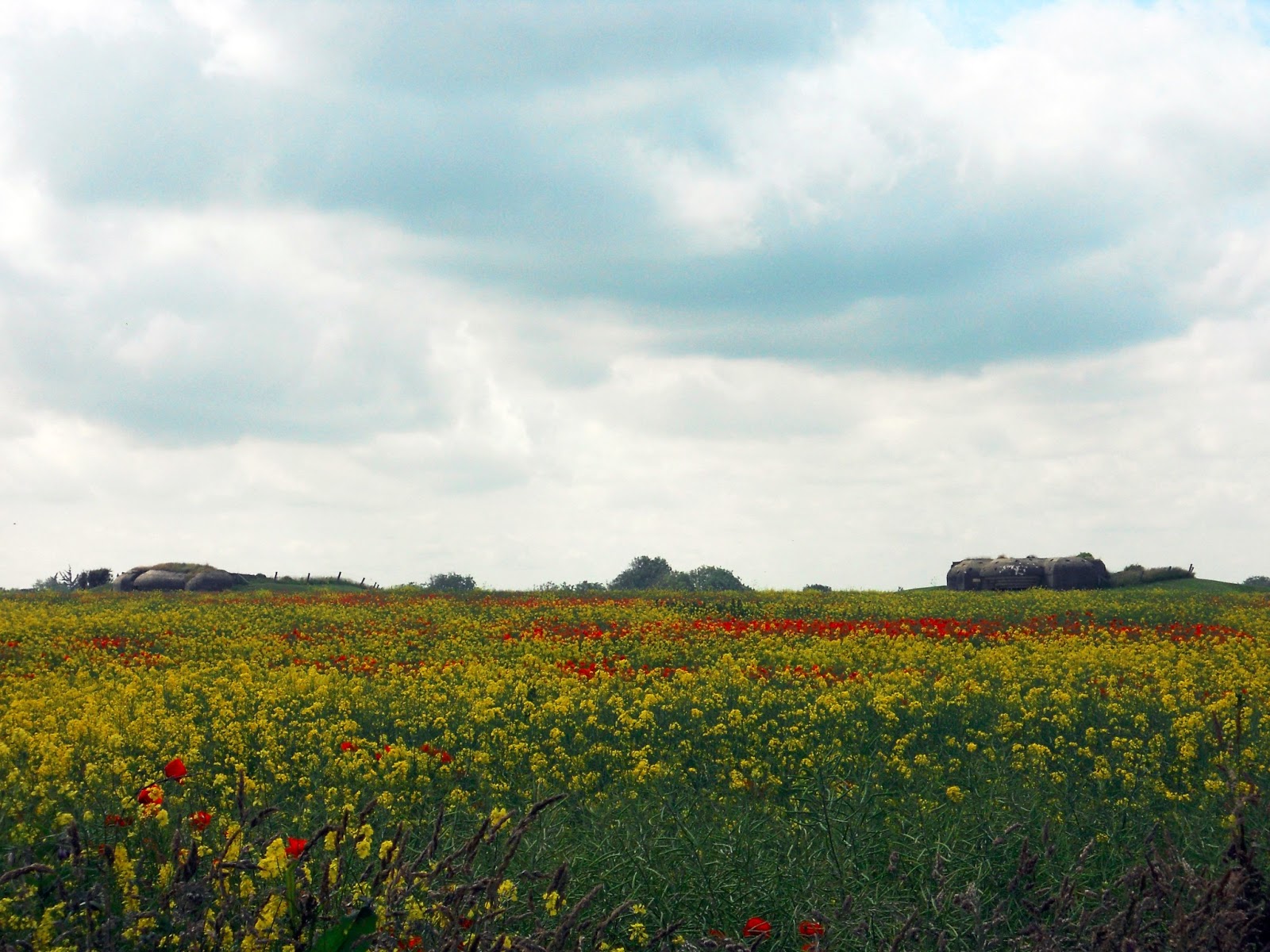 |
| source: Army Signal Corps Collection, U.S. National Archives |
Click to view D-Day Tour, Normandy Coast, France in a larger, navigable map
Our first stop was Arromanches, where the Allies built a false harbor by floating concrete and steel barriers across the English channel. We could see part of the harbor still intact in the distance, and pieces had also washed up on the beach. The story behind the harbor's design and construction is really fascinating, and explained well here.
Next, we drove to the tiny town of Longues-sur-Mer to see the Germany battery. It consists of 4 big guns protected by casemates (thick concrete 'caves') and set back about half a kilometer from the beach, with a sighting post on a cliff overlooking the water to send directions to the gunners.
 |
| beautiful poppy and goldenrod fields were all along the coast |
The landing site is lovely beach in its own right, the kind of place that would be packed with families back in the US. Wide beaches and gently sloping hills (rather than cliffs) made this spot ideal for staging the landing. After reading the map, though, we realized that this area probably looked very different 70 years ago.
 |
| remains of German fortifications on the hill--most of the trenches have been erased by the sea |
 |
| view from the beach, with some landmarks for scale (approx.) distances measured from the hump of grass in the foreground there's about 300 yards of sandy beach behind this point |
The cemetery includes a really neat memorial with maps showing the operation in full, as well as a chapel with a beautiful mural on the ceiling. While we were there, we realized that most of the people visiting the cemetery had not fought there--most of the soldiers who fought in the war are now either dead or in their late 90s. For something that so prominent in our history, it seems strange that it was so long ago. I'm very glad that the Library of Congress is dedicated to preserving veterans' stories.
Last, we stopped at Pont du Hoc, where Army Rangers scaled the cliffs to dismantle huge German gun emplacements at the top. The story behind it reveals a lot about the determination and bravery of the troops, but the sad ending is that the guns had been moved several days prior to the attack. This area includes a huge number of guns, though, so it was clear why this point was deemed so important. Here we saw the most evidence of Allied bombs, with 10-20 foot deep craters pocking the entire area.
We (especially J) had read about and seen videos and movies about D-Day, but it was really a life experience to visit in person. Being in the places we had heard so much about really brought history to life, and it was one of my favorite parts of the trip.
P.S. This has been somewhat of a somber post, but next up on the trip is our visit to the romantic Mont St. Michel and the outrageous chateaus in the Loire Valley. More soon!










No comments:
Post a Comment